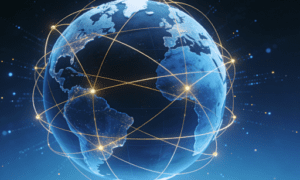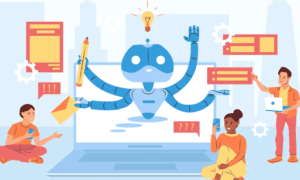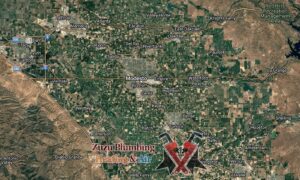When people talk about expanding broadband connectivity, the conversation usually focuses on the “last mile,” the line that connects your home or office to the internet. But the real barriers to access lie as much with the miles in between.
In many rural and underserved communities, it’s not just that homes are unconnected, it’s that there’s nothing nearby to connect them to – the infrastructure simply isn’t there.
Having spent my career working across public infrastructure, cybersecurity and digital equity, I’ve learned that this much is clear: If we’re serious about closing the digital divide, we have to start in the middle.
At MCNC, we manage more than 4,500 miles of middle-mile fiber across North Carolina. This infrastructure forms the digital backbone of our state. It connects every public school, every community college, and every public university to the wider world. It supports our telehealth networks, libraries, local government services, and more.
Middle-mile infrastructure may be invisible to most, but its impact is visible – and its absence noted – in the millions of lives it makes better every day. Investing in the middle mile will result in the biggest leap toward lasting digital equity.
Public roads of the internet
I often compare the middle mile to the public highway system. Just like roads made it possible to travel and transport goods across the country, middle-mile fiber enables essential services, education, health care, and safety to function digitally.
It also makes it easier and more affordable for last-mile providers to connect homes and businesses. Without it, remote and rural locations simply aren’t worth the investment for providers to install and maintain last-mile connectivity.
By building out from the middle, we’re removing barriers and inviting innovation. And we’re giving last-mile providers what they need to serve communities overlooked for far too long.
Where equity begins
Every day, we hear stories that remind us why this work matters. In our own communities, we know kids who couldn’t attend virtual school during COVID because they didn’t have a reliable connection; or how patients in rural communities had to drive to libraries just to join a telehealth appointment; or the families who took unpaid leave to drive hours for their loved one to see the nearest doctor. Connectivity doesn’t just enable opportunity, it determines it.
And while MCNC connects thousands of institutions, residents still need access at home. That’s why we’re strong advocates for public investment in middle-mile infrastructure.
When we reduce the cost of reaching remote areas, we create a ripple effect, benefiting every household, business, and student.
The middle-mile moment needs support
This work doesn’t happen in a vacuum. It depends on thoughtful, sustained support from non-profit networks like ours, but also from policymakers and funders who understand the stakes.
Public funding programs such as the Universal Service Fund (USF) and BEAD are critical. They help ensure rural schools, health clinics, libraries, and underserved communities can access and afford the infrastructure they need to thrive as well as compete in today’s digital world.
Unfortunately, these programs are at risk, and if they falter, entire regions will once again be left behind. MCNC is invested – financially and philosophically – in this effort because it makes sense and it’s the right thing to do for our communities. But we also can’t do it alone.
Middle-mile investment must remain a national priority, allowing both the public good and private innovation to flourish.
What’s next?
Connectivity isn’t some ethereal luxury. It’s as much infrastructure as our roads, water, and electricity. And we must plan for, protect, and fund its completion and maintenance with the same seriousness we do these legacy elements. If we do that, we won’t just improve internet speeds. We will bolster education, transform health care, and give local economies a real chance to thrive.
The work ahead isn’t easy, but it’s necessary. And it’s happening at MCNC every day. We’re connecting what matters, protecting what’s critical, and preparing for what’s next.
We’re driving connectivity because the next big leap in digital equity won’t come from a single device or a single program. It will come from infrastructure that’s strong, secure, and built to serve everyone.
##
About the Author
Tracy Doaks is president and CEO of MCNC based in Research Triangle Park, N.C.
Visit her CEO Corner | Connect on LinkedIn

































